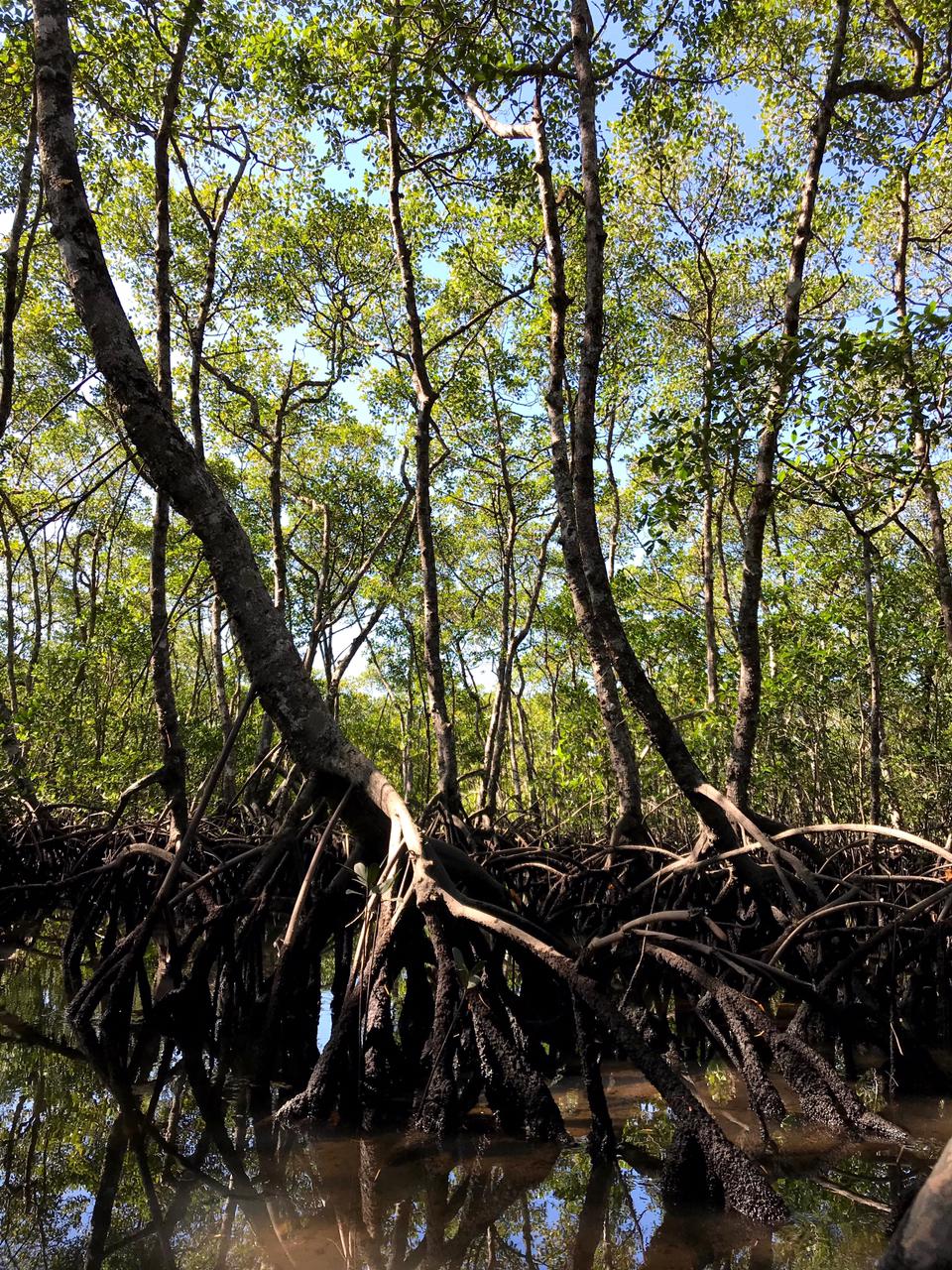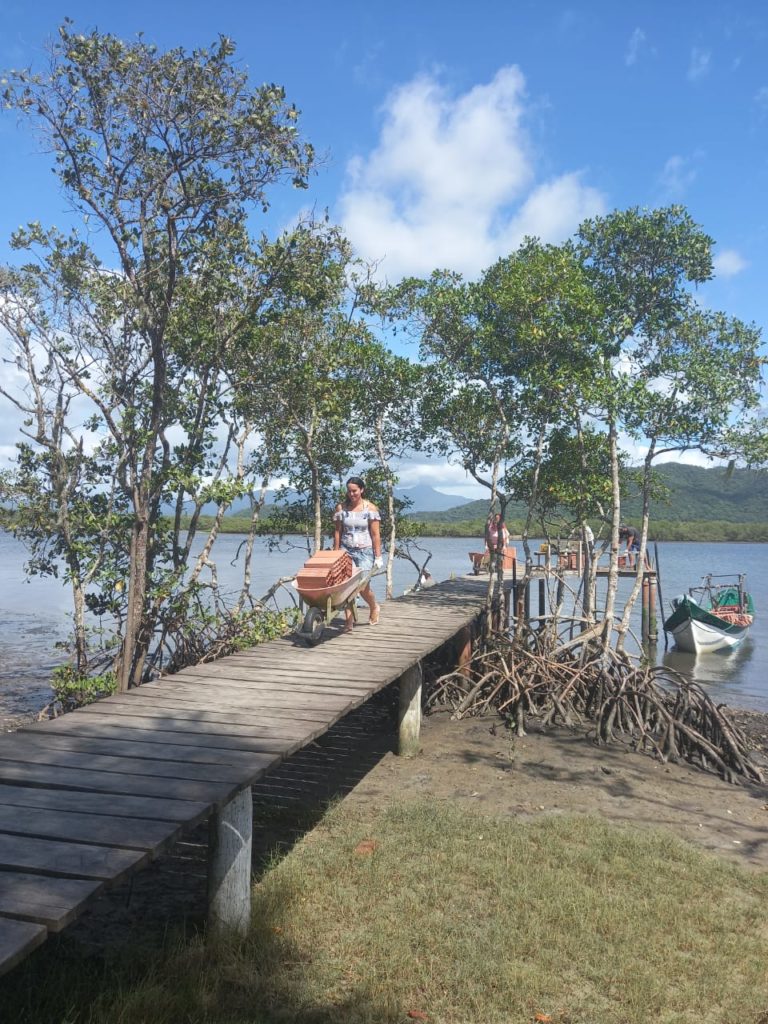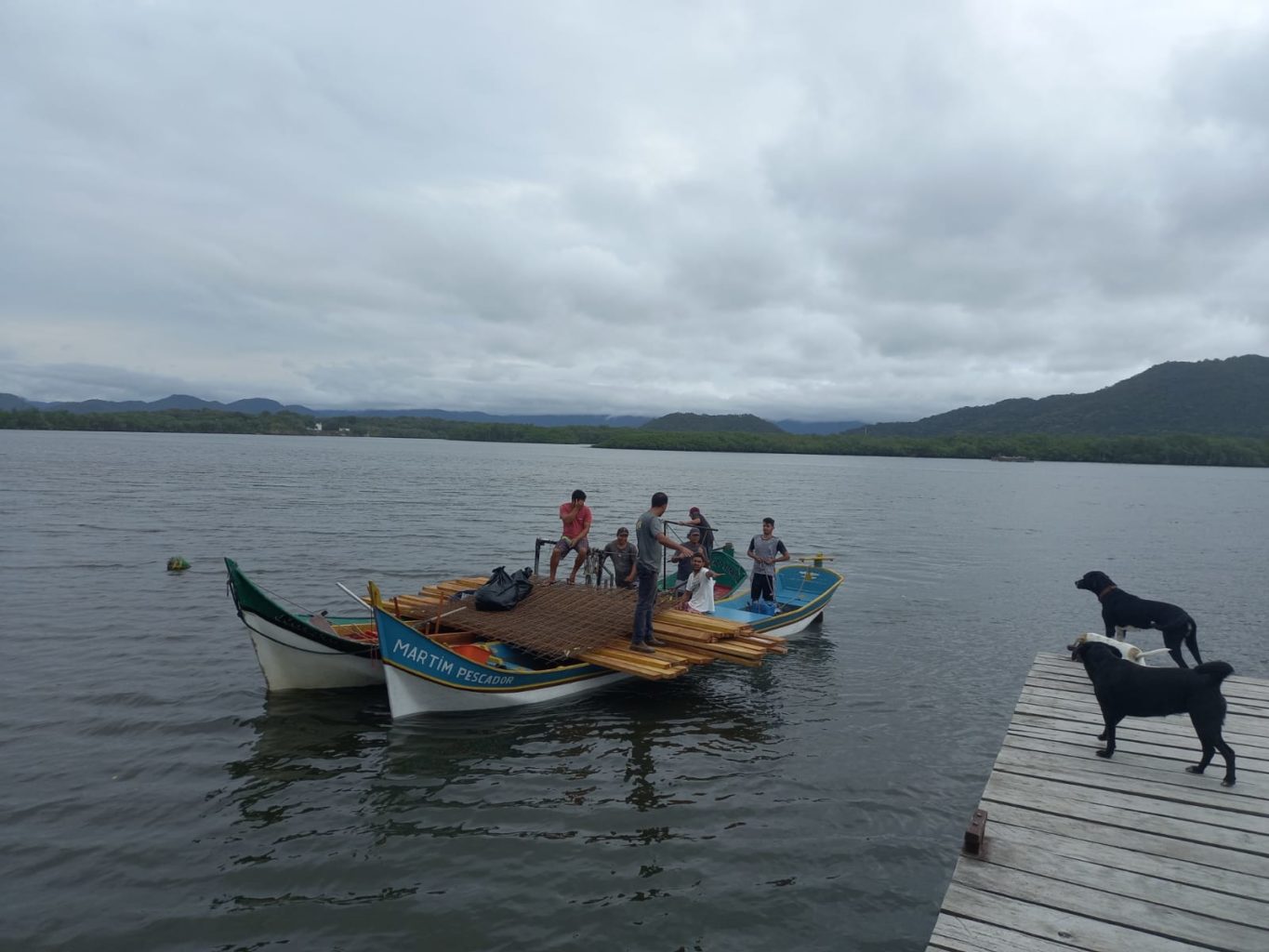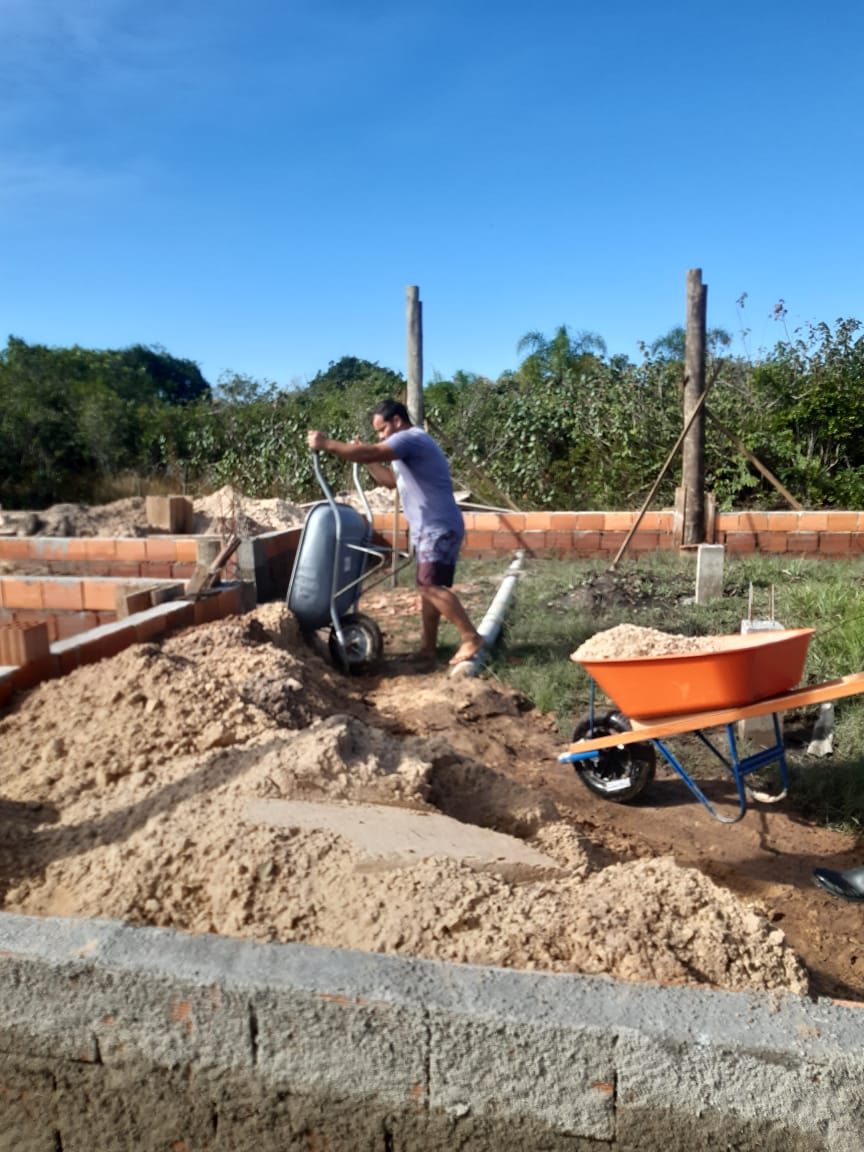Enseada da Baleia (Whale’s Cove), is a Caiçaras community; its inhabitants’ ancestors were indigenous people, Africans, and Europeans. Today, community members are protecting mangroves that are essential to their way of life. Women lead the community, where people make a living from farming, crafts, and small-scale harvesting of fish, crabs, and oysters.
They live across a narrow channel from the dense mangroves of Tumba Island. Alligators and otters are found in this rich ecosystem, as are herons, spoonbills, kingfishers, parrots, and hawks.
The fishers know that they need healthy mangroves. But sea level rise, overfishing, and development threaten the forest and their livelihood. Because there are still lots of the large fiddler crabs called ucá—which have declined in other regions–in the Tumba Island mangroves, fishers from other islands come there, some during the closed season. Some use illegal traps and even cut down mangroves for easier access to the crabs. The area is part of a protected area, the Tumba Island Extractivist Reserve, but the government does little to enforce the rules.
The community’s artisanal fishermen see themselves as guardians of the mangrove forest. They will work to prevent illegal fishing, unregulated tourism, and the cutting of mangroves. They go to Tumba Island daily, so they can closely monitor the area. If they see any violations, they can quickly notify the reserve authorities.
The community is using a Seacology grant to build a cultural and community center. The community had to leave its original location because of rapidly accelerating erosion. Working collectively, with women managing the process, the community managed to rebuild their houses. Together, they hope to preserve their heritage with a place that celebrates their unique culture.






















